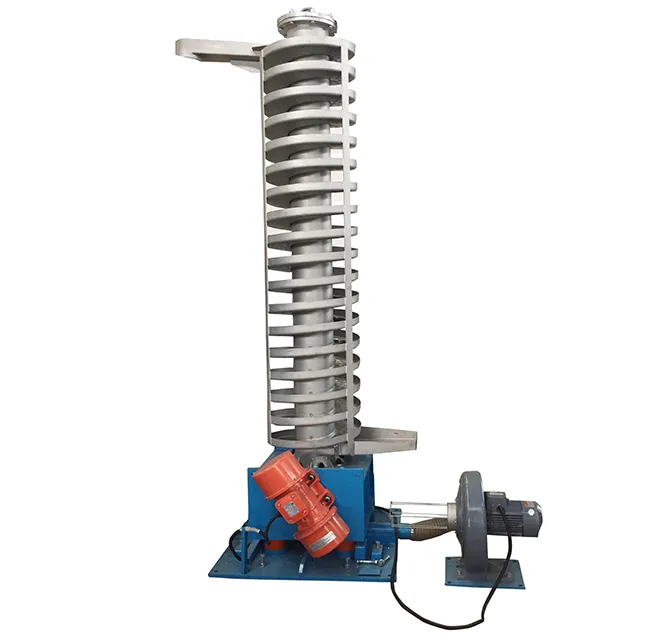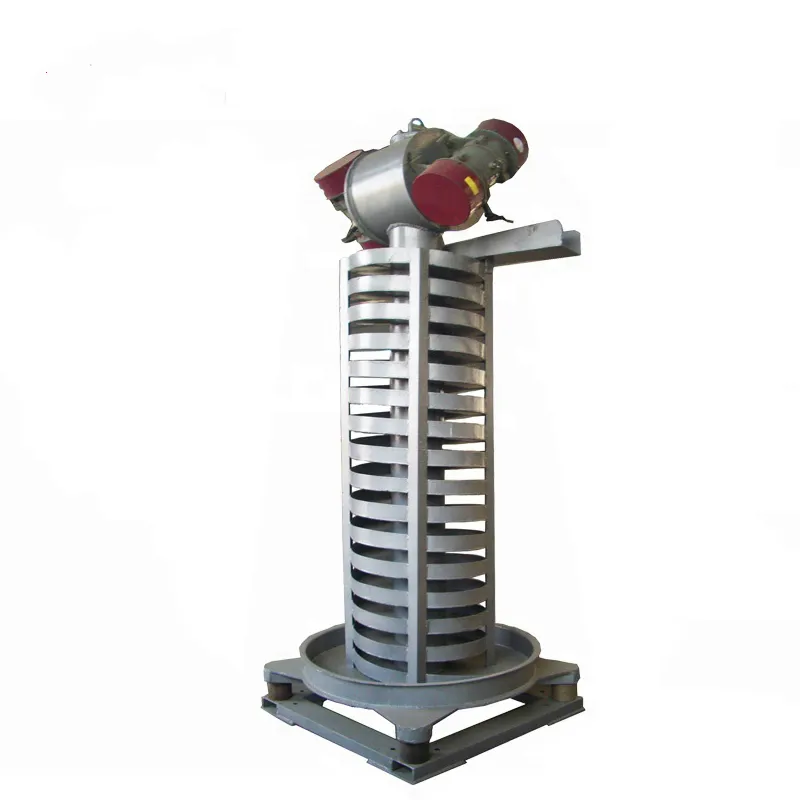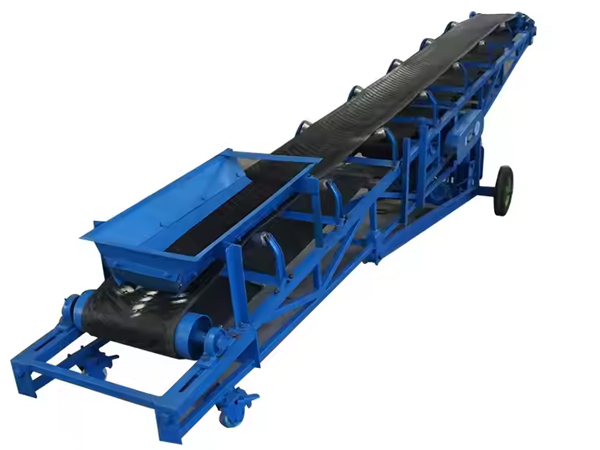Truck Loading Roller Belt Conveyor
Wednesday May-07 2025 16:47:57
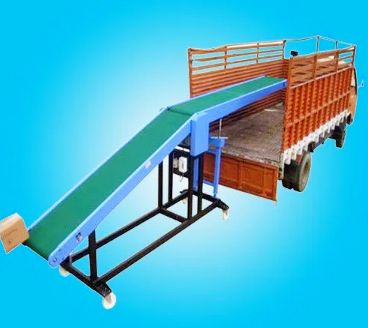
Truck loading roller belt conveyor is a pipeline equipment specially designed to efficiently load goods from the ground or production line to the truck. It is suitable for loading and unloading operations of bulk warehouses (such as sand, grain, coal) or packaged goods (such as bags, bagging warehouses). Through the continuous movement of the belt conveyor and the drive of the warehouse, it relies on the pipeline force to transport from the feed end to the discharge end, directly connects the truck to handle, reduces manual operation and improves efficiency.
Working principle of truck loading roller belt conveyor

The truck loading roller belt conveyor relies on the friction between the driving roller and the conveyor belt to transmit power and keep the conveyor belt running continuously. The material is placed on the conveyor belt and is transported to the designated position as the conveyor belt moves. During the conveying process, the roller supports the conveyor belt and the material, and the tensioning device ensures that the conveyor belt is always in a suitable tension state to ensure the normal operation of the conveyor.
Structural composition of truck loading roller belt conveyor
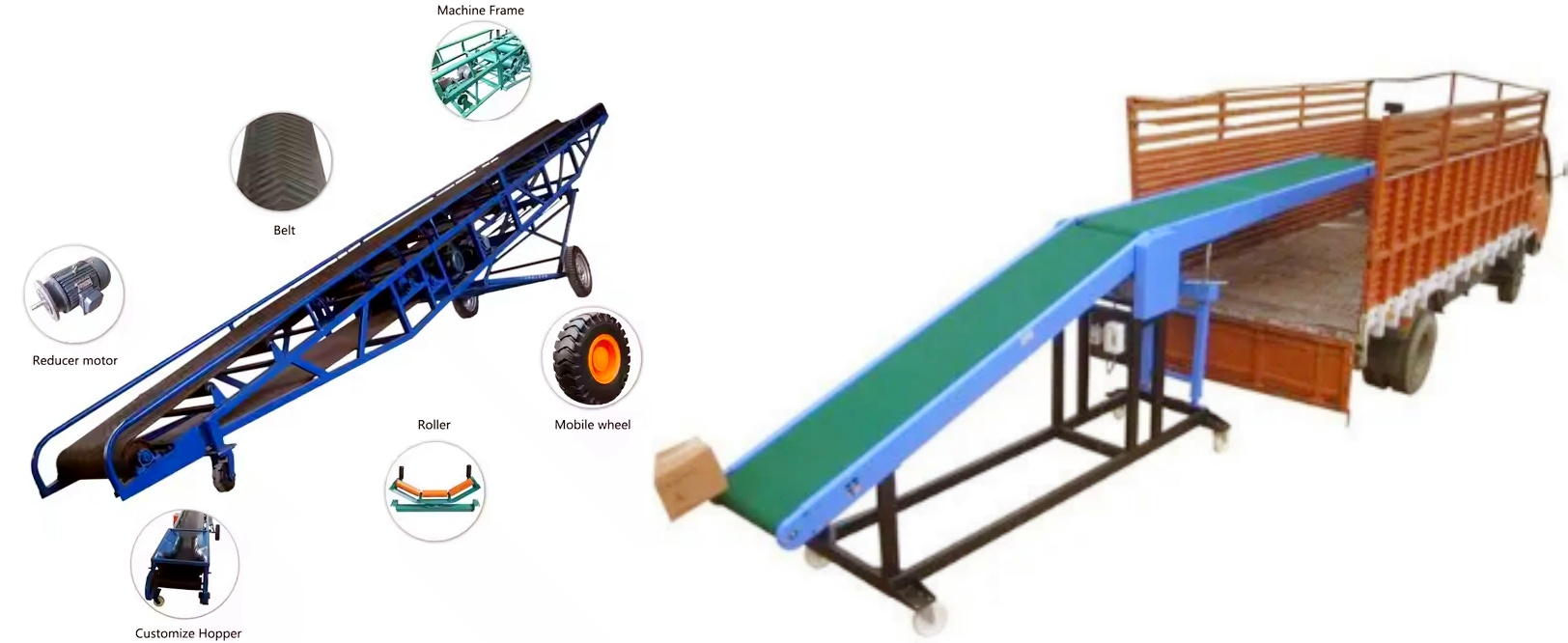
Conveyor belt: usually made of rubber, PVC or steel wire rope core, carrying and transporting goods.
Driving roller: provides power to drive the conveyor belt to operate.
Redirecting roller: changes the running direction of the conveyor belt (such as the tail roller).
Rollers: support the conveyor belt and reduce friction (including load-bearing rollers and return rollers).
Tensioning device: maintains proper tension of the conveyor belt to prevent slipping.
Frame: steel structure that supports the entire conveying system.
Motor and reducer: the core of the drive system, controlling the conveying speed.
What are the advantages of truck loading roller belt conveyor?
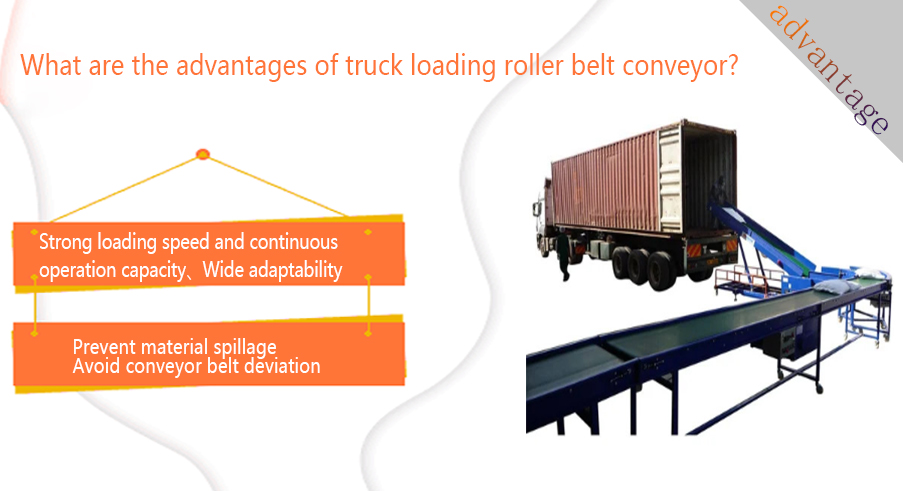
Strong loading speed and continuous operation capacity: The conveying speed can reach 2-4 meters per second, and the loading capacity of a single device can reach 80-800 tons per hour (depending on the bandwidth and material density), which is 5-15 times the efficiency of manual labor. The continuous operation mode replaces the traditional intermittent loading, and the goods are seamlessly connected from the loading point to the unloading point, which significantly shortens the loading time, reduces the loss of equipment start-up and stop, and improves the overall efficiency by more than 30%.
Wide adaptability: Bulk materials (ore, grain), bagged goods (fertilizer, cement), and boxes (express parcels) can be transported efficiently. Special designs such as corrugated sidewalls and air cushion conveyor belts can cope with sticky, dusty or fragile materials. Flat, inclined or Z-shaped layouts are suitable for various loading and unloading scenarios such as trucks, warehouses, and yards. The modular design supports rapid disassembly and assembly, which is convenient for temporary construction sites or mobile operations.
Prevent material spillage: Select the appropriate conveyor belt type and surface pattern. For example, using a conveyor belt with skirts or sidewalls can effectively prevent materials from spilling from the edge of the conveyor belt during transportation. Material guide troughs and baffles are set at the loading and unloading points of the materials to guide the materials to fall accurately on the conveyor belt and prevent the materials from scattering during loading and unloading.
Avoid conveyor belt deviation: install self-aligning rollers on both sides of the conveyor belt. When the conveyor belt deviates, the self-aligning rollers will automatically adjust the position of the conveyor belt to return it to the normal operating track. By adjusting the position of the drive roller and the redirecting roller, the roller axis is kept perpendicular to the center line of the conveyor belt to ensure that the conveyor belt is evenly stressed during operation and reduce the occurrence of deviation.
Common technical parameters of truck loading roller belt conveyors

|
Item |
Parameter range |
|
Belt width |
500mm, 650mm, 800mm, etc. |
|
Conveying length |
6m, 8m, 10m, 12m, etc. |
|
Conveying capacity |
30-200 tons/hour (depending on the material) |
|
Conveying angle |
0°-30° (adjustable) |
|
Motor power |
2.2kW~7.5kW (depending on the length) |
Application of truck loading roller belt conveyors
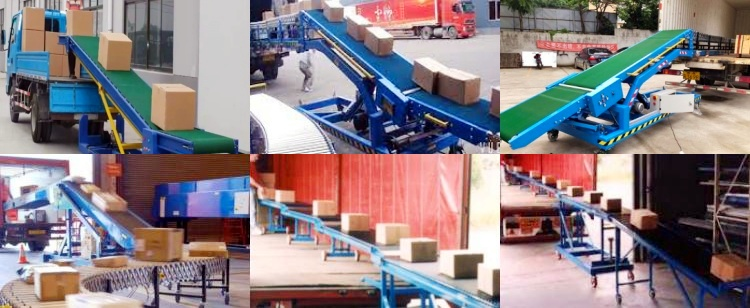
1. Port and terminal loading and unloading: Truck loading roller belt conveyors are used for bulk storage of warehouse ships (such as coal, iron ore, grain, fertilizer) directly loaded onto trucks for subsequent transportation to warehouses or processing plants. Supports large continuous operations and is suitable for high-intensity loading and unloading needs of ports. Some telescopic belt conveyors can import truck cargo to ensure uniform loading.
2. Logistics and transportation: In e-commerce warehouses, logistics centers or factories, truck loading roller belt conveyors are used to load cartons, bagged goods (such as fertilizers, feed) or tower goods from sorting lines or warehouse goods to trucks for freight. It can be seamlessly connected with automated sorting or palletizing equipment and preset operations.
3. Mining and gravel yards: In open-pit mines or gravel yards, roller conveyors are used to load crushed ore (such as iron ore, copper ore), sand and gravel or construction aggregates from stockpiles or crushing and screening equipment directly to trucks for transportation to processing plants or construction sites. Crawler or wheel-type structures enable pipe machines to move on uneven mines and quickly adjust loading positions.
4. Agriculture and grain processing: Truck loading roller belt conveyors are used to load bulk grains such as wheat, corn, and soybeans from warehouses or storage equipment to trucks for transportation to markets or deep processing enterprises. Low-speed operation and buffer roller design reduce grain import rates. Lifting and telescopic functions are equipped with different truck heights and compartment heights.
Precautions
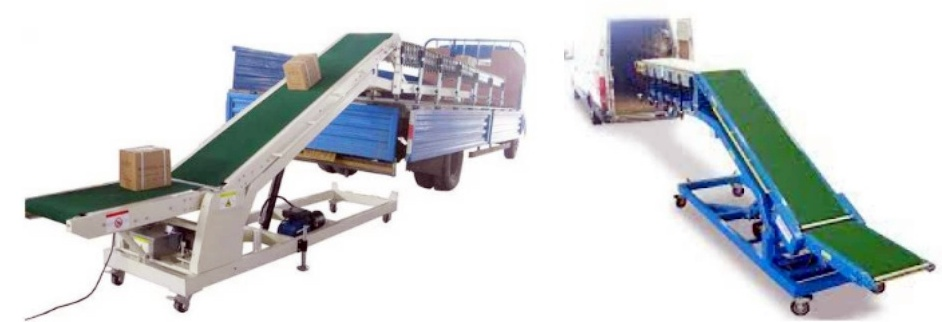
①Daily inspection: roller bearing lubrication, belt tension, hydraulic oil level.
②Safe operation: Confirm that the carriage is accurately aligned before starting to avoid collision. The emergency stop button must be clearly marked.
Tension adjustment: The pipeline belt may stretch during operation, and the tension needs to be adjusted regularly with a tensioning device to maintain traction.
Deviation adjustment: Correct the conveyor belt deviation by adjusting the bearing seat of the drive tray or redirection warehouse.
Customized needs: Choose fixed, mobile or telescopic equipment according to the truck size, loading and unloading type and loading and unloading height.
③Seasonal maintenance: Antifreeze is required in winter, and attention should be paid to the heat dissipation of the hydraulic system in summer.

Depending on different application requirements, truck loading roller belt conveyors can have different configurations and features. For example, some conveyors can be telescopic to better adapt to trucks of different lengths. Some conveyors can be tilted to make it easier to load goods. Some conveyors can be equipped with weighing devices to weigh the goods during loading. If you need a truck loading roller belt conveyor, it is recommended that you choose the appropriate model and configuration according to your specific needs. You can consult our customer service for more detailed product information and technical support.
